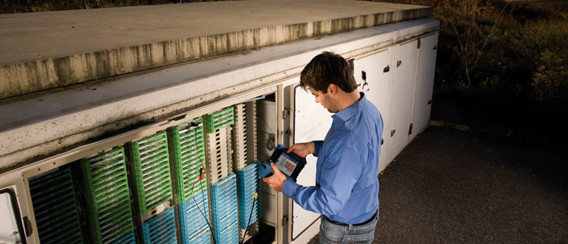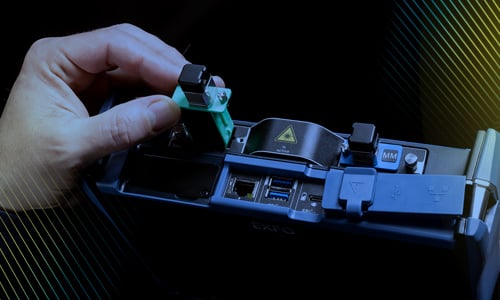EXFO Enhances Copper and DSL Testing
VDSL2 deployments are increasing rapidly just as FTTH is slowing down slightly in the ever-changing broadband deployment race among service providers. EXFO’s new offering includes a DSL modem module with additional copper measurements, supporting faster adoption of broadband to help you stay competitive.
In environments where DSL has traditionally been deployed over ISDN infrastructure, but in which ISDN is not being correctly utilized, EXFO provides a new modem configuration supporting Annex J. This effectively increases the upstream speeds delivered to users, since the DSL no longer has to battle with ISDN for valuable frequency spectrum. In addition, this EXFO modem supports Annex A and Annex B, as well as bonding and vectoring. The new modem also complements our existing modem supporting the latest in bonding and vectoring, and is available on the MaxTester 600 Series and on the FTB-635 products.
For the copper test enthusiast (or anyone else needing a test solution with the “right stuff”), EXFO has also added a number of new copper test features, primarily to the FTB-600 Series. Are you having trouble with split pairs? Are you unsure as to whether or not you have split pairs, yet all too aware that the subscriber is screaming at you for a solution? Good news: EXFO has added Crosstalk TDR (XTALK TDR) to the already capable TDR suite on the FTB-600 series. Split pairs by nature are extremely susceptible to noise ingress/egress, but the XTALK TDR function enables you to transmit a pulse of energy down one pair, measuring the resulting reflection on a second pair. Of course, XTALK TDR is not meant only for split pairs, but also for any other fault where noise ingress/egress is possible.
Another copper measurement introduced to the FTB-600 series is the K-test (or Küpfmüller test) for detection/location of highly resistive faults. The K-test is excellent for finding highly resistive faults where the fault location affects both copper wires at the same location. Today’s FTB-600 Series now combines resistive fault location (RFL) tests for two-wire (single good pair) and four-wire (separate good pair) testing with the power of the K-test. As a practical example of the test, if all copper pairs in a cable bundle are wet, and there is no ability to run a separate good pair, the K-test is the perfect test for determining where the wet section is.
There are also other goodies available (including Station Ground) for both the MaxTester and the FTB. For more information about the recent enhancements to DSL and copper testing, please feel free to download the latest spec sheets and contact me or your local EXFO Representative.




